Industry leaders at the BVRLA’s recent Fleets in Charge conference have called for action to increase demand in the “stagnating” new electric car retail market.
SMMT registration data shows that over the first half of this year, private battery electric car uptake has fallen 10.8% year-on-year, with fewer than one in five BEVs going to private buyers.
“We need to start to address the overall level of demand for EV,” said Gerry Keaney, chief executive of the BVRLA. “Some areas are stagnating and we’re seeing that clearly in the retail sector.
“We need to make those cars more affordable. We need some support programme, whether its incentives, reduced VAT or something else.
“There’s no incentive today for a retail buyer to choose an EV over an ICE vehicle.”
The conference looked at three issues affecting the new electric car retail market - affordability, education and incentives - and how they can be tackled, writes Andrew Ryan.
Affordability
“The biggest barrier to a retail consumer moving to an electric car today is cost,” said Lakshmi Moorthy, managing director of Arval UK.
“I firmly believe most people want to do the right thing for the planet, but they’re not going to do it if it’s going to make them financially worse off.”
The conference heard the average new price of a battery electric car is £49,165, compared to £37,435 for an ICE car.
 While battery electric cars can be cheaper to fuel than ICE vehicles depending on where they are charged, the cost to run one will increase from April 1 when they will be subject to a changes in vehicle excise duty.
While battery electric cars can be cheaper to fuel than ICE vehicles depending on where they are charged, the cost to run one will increase from April 1 when they will be subject to a changes in vehicle excise duty.
Traditionally, BEVs have been in band A under the graduated VED system, which is currently £0.
From April 1, 2025, this band is effectively being removed, with BEVs moving into the first band where a rate becomes payable. This is currently for vehicles with CO2 emissions of between 1g/km and 50g/km and is £30.
After the first year, BEVs will be subject to the standard annual rate (currently £190), which they were previously exempt from.
Also, from the same date new electric cars with a list price exceeding £40,000 will need to pay the Expensive Car Supplement for a period of five years from the second tax payment onwards.
“That was designed so that premium car buyers would pay a bit more than those who bought traditional volume or value cars,” said Mike Hawes (pictured below), chief executive of the SMMT. “You saw the average price of EVs – the supplement sweeps up most of them.
“But when we’re thinking about these vehicles, remember they're a new technology, they are more expensive to make. There is no getting away from that.
“Prices will come down, but it will be gradual.”
Ian Plummer, commercial director at Auto Trader, told the conference the importance of cost is highlighted by his company’s experiences which show there is a willing pool of buyers for EVs – if the price is right.
This is also true in the used car market, he said. “Are people interested in used EVs, and is there an equation that works? Yes they are and there is an equation that works. It’s price parity.”
After increasing through – and immediately after - the Covid pandemic, EV residual values have dropped by around 50 percentage points since August 2022, including a fall of around 25 to 30 percentage points over the past year
They are now at a level where they are attractive to customers, said Plummer. “If you’re a retailer who held a car while EVs were repriced over this period, it’s been painful. You bought it at one value, maybe sold it for less than that,” he added.
As used EV prices fell through early 2023, days to sell dropped from 47 days to 26 days – the fastest of any fuel type.
“Fundamentally, if you’re now buying and selling an EV in the used market as a retailer, you’ve got a good opportunity to turn that car around well because you are selling it at a price point the consumer needs it to be, which is parity,” said Plummer.
Education
The UK is awash with misinformation about EVs, and this is negatively impacting how retail buyers think about the technology, the conference heard.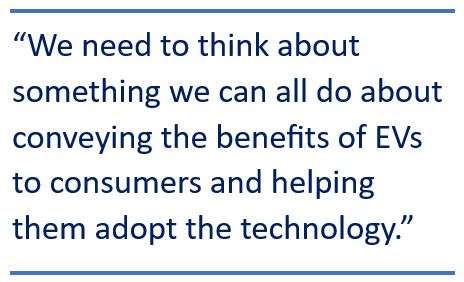
Myths include their susceptibility to fires and excessive battery degradation. “The fact is EVs are good,” said Edmund King, president of the Automobile Association.
 “Quentin Willson (journalist and campaigner, pictured) had a Tesla S model on the recent EV Rally that had done 250,000 miles and the battery was 92% as good as it was when it was new.
“Quentin Willson (journalist and campaigner, pictured) had a Tesla S model on the recent EV Rally that had done 250,000 miles and the battery was 92% as good as it was when it was new.
“A lot of these myths about EVs just don’t hold up and I do think part of the problem is linked to a lack of that correct information.”
Hawes added: “What we need to do is change the narrative. We used to frame it well; we had this tremendous thing called Go Ultra Low, which was a partnership between Government and industry to promote and extol the virtues of EVs to assist the transition.
“We need to think about something we can all do about conveying the benefits of EVs to consumers and helping them adopt the technology.”
Manufacturers and dealers have a major role to play in helping to overcome any concerns and misinformation to drive retail demand.
“We have to recognise that for the people who sell EVs to customers day-to-day, it’s actually quite a heck of a change and we need to work through some of those areas that customers are inquiring about to address their concerns,” said Owen Shepherd, head of direct sales at Volkswagen UK.
“We know retail customers looking at EVs have a longer consideration time than those looking at ICE vehicles in terms of the time they want to take to make that decision.
“They need more intervention from the sales team to walk them through the journey so they are confident an EV is the right choice for them.”
To do this, manufacturers should ensure retailers are up to speed with everything that goes into buying and living with an EV.
“It’s not just a conversation about the monthly rate or the power output in comparison to an ICE vehicle etc.,” said Shepherd.
“It’s a conversation around charging, around the cost of ownership, around charging an EV at home versus fuelling an ICE at a petrol station.
“It’s about how we normalise BEVs in a customer’s mind. That’s actually a really challenging job for sales teams to do.”
Volkswagen has introduced a programme called ‘Same Spirit, Different Energy’ to educate and engage its sales teams.
“This is about taking the traditional spirit and the history and heritage of our brand and how it is still in existence in our new EV cars. It’s just they are powered in a different way,” said Shepherd.
“We focus on their ease of use, how you live with an EV, the charging partnerships, to really explore the benefits and savings coupled with some really competitive offers on the product.”
The programme includes rolling out specific EV training at each site in its retail network, as well as encouraging retailers to separate their EV leads from ICE leads in recognition that they may need more interventions and will take a longer period from the initial inquiry though to sale.
Incentives
Speakers at the conference called for the re-introduction of Government incentives to help retail customers switch to electric cars.
In the past, the Government offered the Plug-in Car Grant to help towards the cost of purchase of a vehicle, and the Electric Vehicle Homecharge Scheme to help homeowners install a charger.
EVs have also been subject to £0 VED and exempt from the Expensive Car Supplement (see affordability section above).
However, neither of the Government grants exist anymore, while the VED benefits are being removed from April 1 next year.
Meanwhile, company car drivers continue to be offered favourable benefit-in-kind tax bands for choosing BEVs, and registrations of the zero emission vehicles in this sector continue to power ahead.
 Keaney (pictured) said: “Where there is support in place, we are seeing strong sales rates of EVs, and that’s being driven by and powered by the company car market and salary sacrifice.
Keaney (pictured) said: “Where there is support in place, we are seeing strong sales rates of EVs, and that’s being driven by and powered by the company car market and salary sacrifice.
“Where there is support, it makes a huge difference. You can then see that where there is no support, the market is really struggling and we’re seeing that clearly in the retail sector.”
Shepherd added: “We’ve seen incentives work within the fleet segment and clearly we need those to continue.
“We’ve also seen them work in the retail segment when the plug-in car grants were there, and I think we need them again so we can move forward instead of the stalling in demand we’re seeing at present.”
Suggestions made at the conference for possible incentives included reducing VAT on EVs for a period of time.
SMMT has previously said halving VAT on BEVs for three years for three years would re-energise the market, putting an additional 300,000 private BEVs – rather than petrol or diesel cars – on the road over the next three years on top of current outlooks.

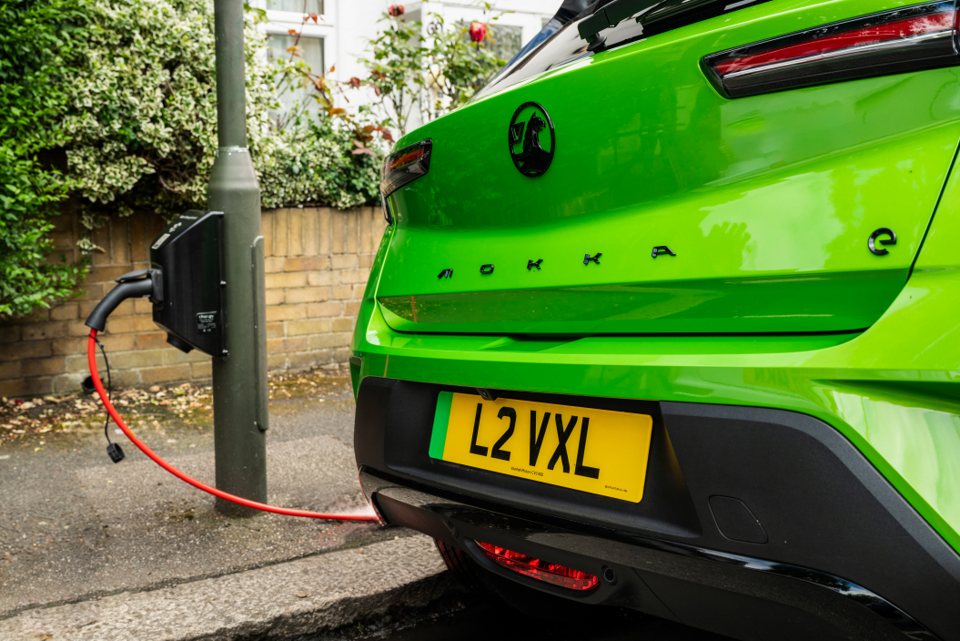




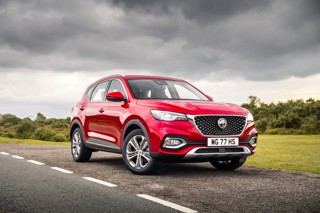
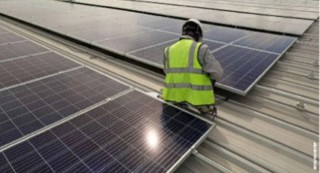
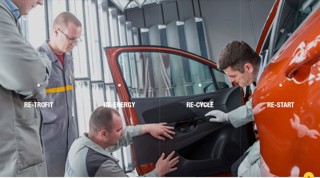
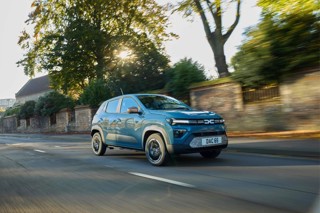













Login to comment
Comments
No comments have been made yet.